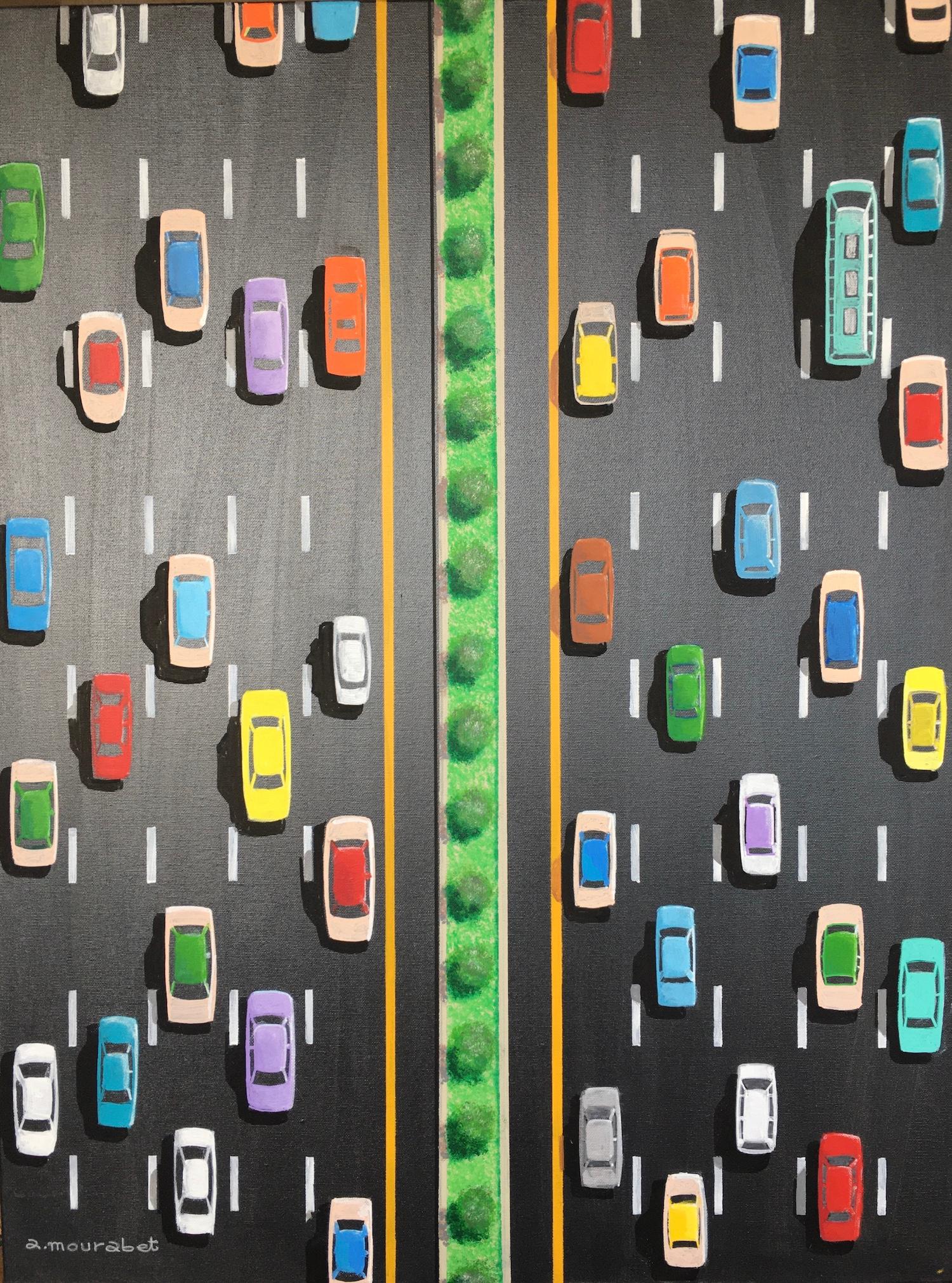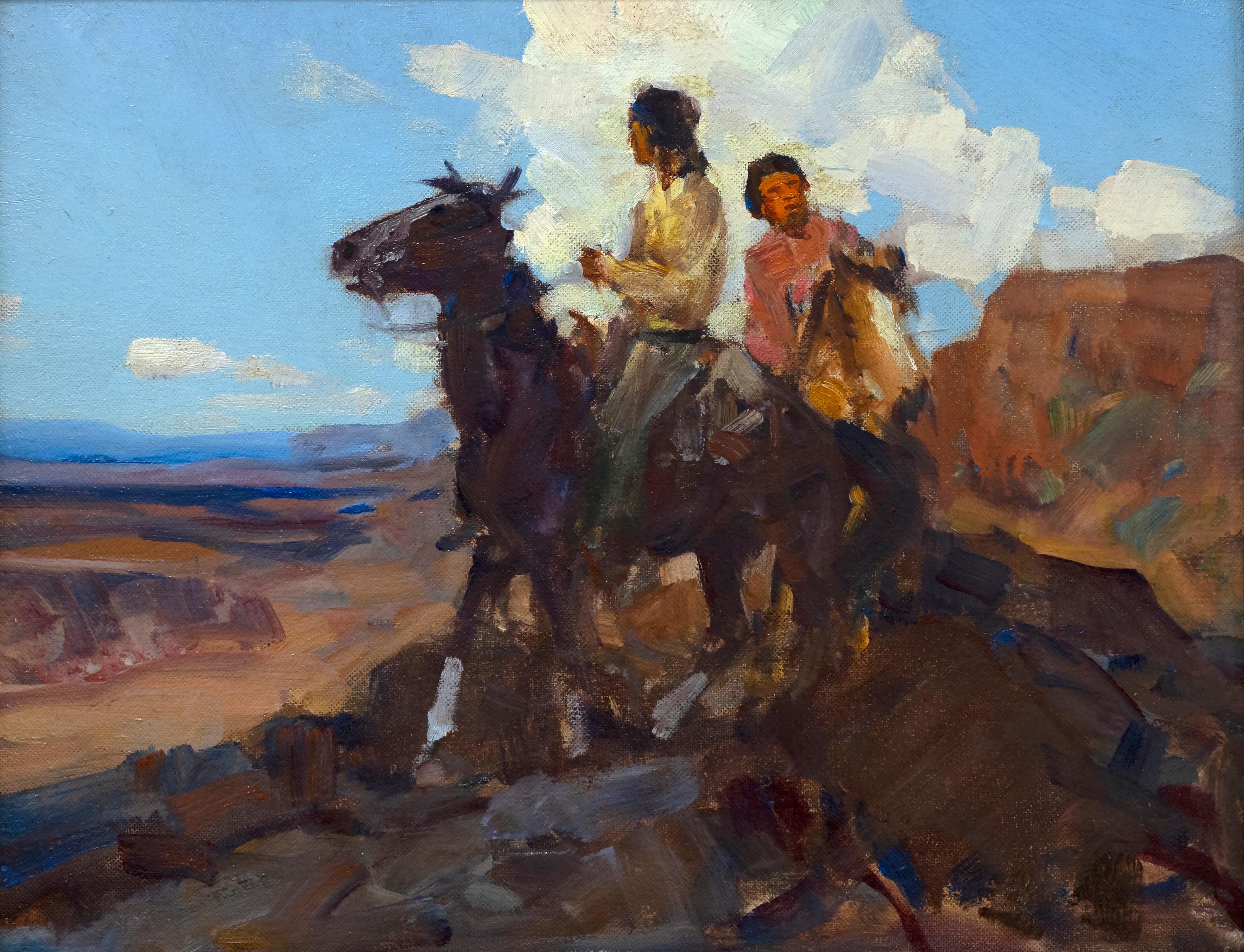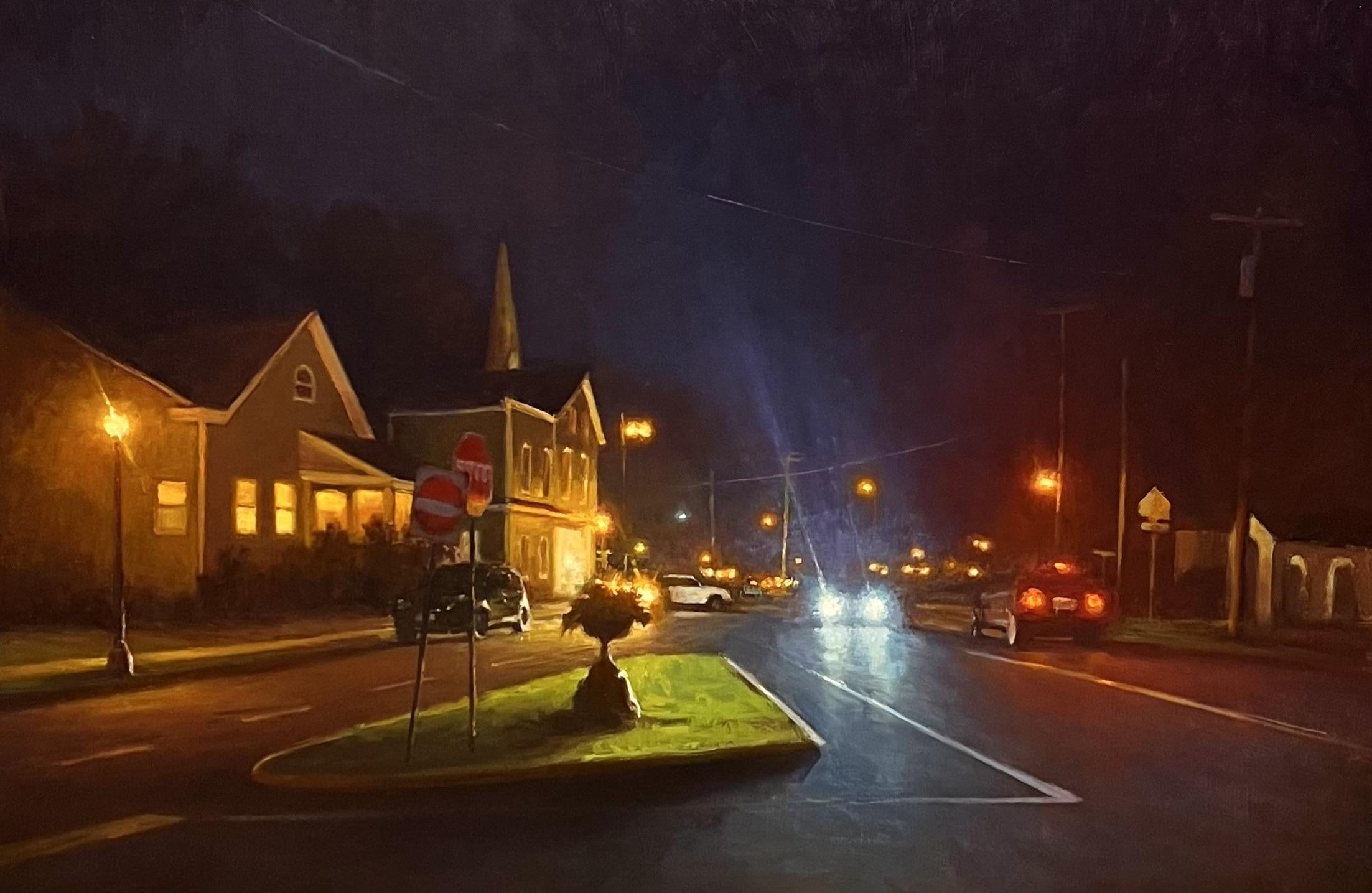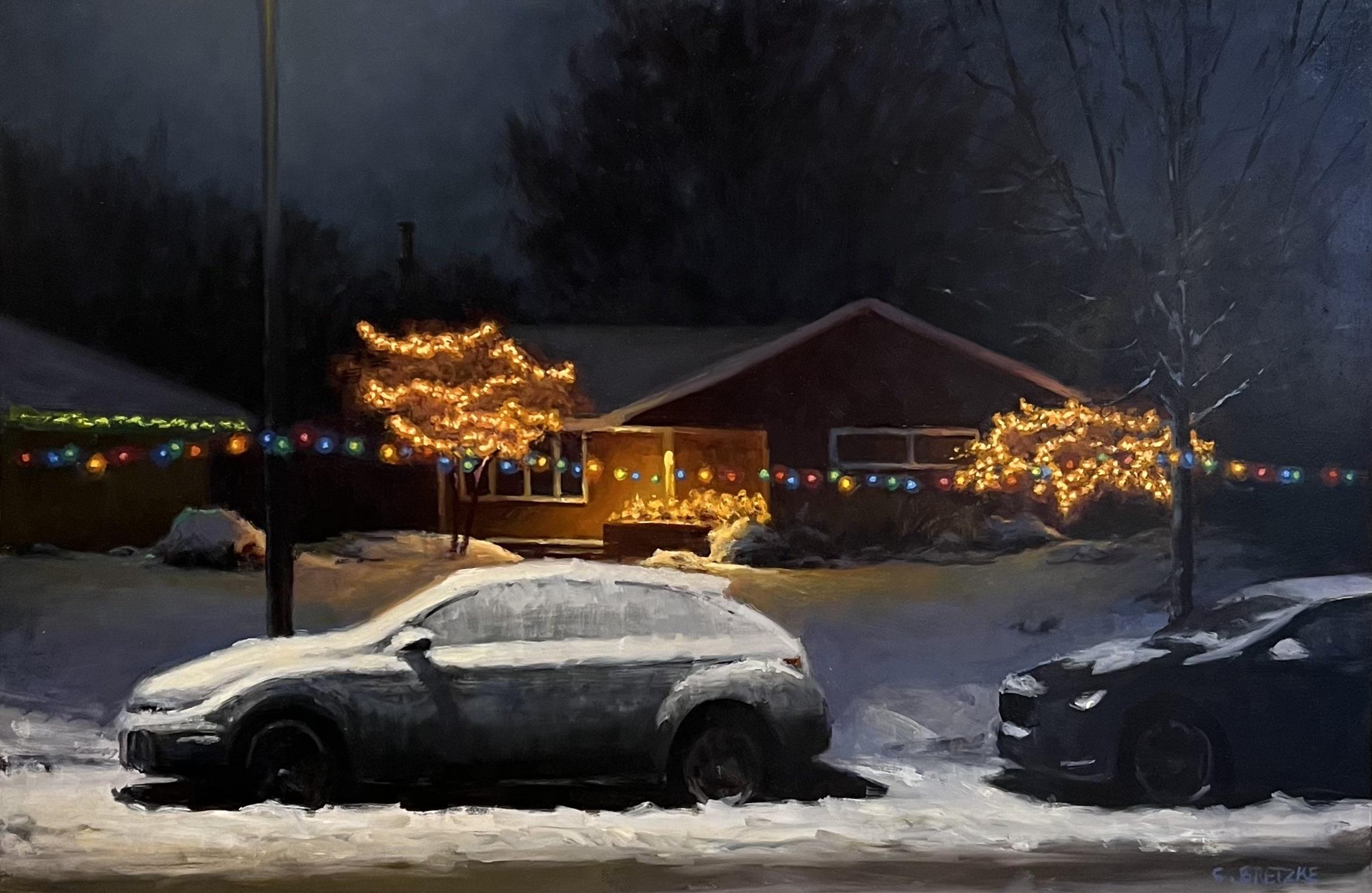Items Similar to At the Spring
Want more images or videos?
Request additional images or videos from the seller
1 of 8
Joshua ShawAt the Spring1849
1849
About the Item
Joshua Shaw was a farmer’s son, born in Billingborough, Lincolnshire, and orphaned at the age of seven. After a boyhood of privation, he tried a number of occupations, until he finally apprenticed to a sign painter and found his métier. Shaw went to Manchester to study art, and by 1802 was in Bath, painting landscapes. In that year he began to exhibit his work at the Royal Academy in London. Essentially self-taught, Shaw achieved an impressive level of competence and versatility, producing portraits, floral compositions, still lifes, landscapes, and, cattle pieces. Shaw continued to send works for exhibition at the Royal Academy, the British Institution, and the Suffolk Street Gallery, all in London, until 1841. (Although Shaw is regularly mentioned and frequently illustrated in a host of general books on American art history, as well as included in numerous historical survey exhibitions, the only monographic study of this artist is Miriam Carroll Woods, “Joshua Shaw [1776–1860]: A Study of the Artist and his Paintings” [M.A. thesis, University of California at Los Angeles, 1971]. Apart from short biographical sketches in various dictionaries and museum collection catalogues, the two most interesting references, both contemporary, are John Sartain’s personal recollections in The Reminiscences of a Very Old Man, 1808–1897 [1899; reprint 1969] and an article in Scientific American from August 7, 1869, “Joshua Shaw, Artist and Inventor.” The article quotes extensively from an autobiographical document in the possession of Shaw’s grandson that Shaw prepared for William Dunlap when Dunlap was collecting data for his History of the Rise and Progress of the Arts of Design in the United States [1834].)
Shaw was determined to succeed, and London defined success. By 1813, Shaw had moved from Bath, where he enjoyed considerable local esteem to the capital city. In that year he showed his ambitious The Deluge, towards Its Close at the British Institution, where it attracted favorable critical attention (the painting is now at The Metropolitan Museum of Art, New York, see John Caldwell and Oswaldo Rodriguez Roque, American Paintings in The Metropolitan Museum of Art, Volume I: A Catalogue of Works by Artists Born by 1815 [1994], pp. 273–77, p. 277 illus.). At some point Shaw became acquainted with the famous American expatriate and President of the Royal Academy, Benjamin West. West made Shaw the guardian of his epic canvas, Christ Healing the Sick in the Temple, which he had painted for the Pennsylvania Hospital in Philadelphia. Shaw and the painting sailed on the Electra, arriving in Philadelphia in 1817, where Shaw supervised the unpacking and hanging of West’s munificent gift. Shaw, who was throughout his life both restless and prone to fits of irascibility, decided to leave England behind. He remained in Philadelphia, where his wife joined him in the following year.
Shaw’s first projects in his new country involved traveling and sketching scenic locales for an illustrated travelogue. Picturesque Views of American Scenery was published in Philadelphia in 1819 with engravings by his fellow English immigrant, John Hill (1770–1850). A second illustrated travel book, United States Directory for the Use of Travelers followed in 1822. Shaw was an activist and an organizer and a principal player in a series of art initiatives in Philadelphia. In 1835, he was among the founders of the Artist’s Fund Society, a breakaway group from the Pennsylvania Academy of Art. Two years later, after quarrelling with the Society’s President, John Neagle, he led a dissident group in establishing the Artists’ and Amateurs’ Association. He left that also after a brief time. Shaw’s differences with the Pennsylvania Academy did not keep him from being among its most active exhibitors. Beginning in 1818, Shaw showed over 75 pictures at the Academy, ending two years after his death in 1862.
Shaw was also an early exhibitor at James Herring’s Apollo Gallery in New York City, the forerunner to the American Art-Union. His correspondence with Herring (who had also been, at one time, a Philadelphia artist) offered Shaw an opportunity to complain about the vicissitudes of the artist’s life including the injuries incurred from destructive critics and the harms inflicted by enemy colleagues. Indeed, a deal of Shaw’s energy was taken up in struggle, and not just in the art world. Like many artists before and since, Shaw was an inventor as well as a fine artist. In his case, he invented an important copper percussion cap for heavy artillery, as well as the glazier’s revolving diamond for cutting curves in glass. According to his own account (as published in the 1869 Scientific American), Shaw invented the percussion cap in 1814 in England, but did nothing with the invention until he came to America. When he attempted to patent his invention, his application was denied on the grounds that he had not met the criteria of having been a resident of the United States for the previous two years. Shaw struggled mightily with the patent system and is credited with later reforms to the law. He was able to patent his percussion cap in 1822, as well as additional firearm improvements in 1828. He was eventually awarded $25,000 by the United States Congress for his invention, of which he received $17,000. This money, although agreed upon, was also not easily extracted from the Federal government and Shaw made numerous trips to Washington, D.C., to advocate for himself. According to Sartain, Shaw received, for his inventions, “a present of a purse of money” from the Czar of Russia. In 1833, Shaw traveled back to England, in an attempt to claim disputed patent rights there. Around this time, he also exhibited paintings at the Royal Society of British Artists.
Despite all of this, Shaw was primarily an artist. He was an Honorary Member of the National Academy of Design, New York, from 1828 until his death in 1860 and exhibited there regularly from 1828 through 1852. (He was “Honorary” because he did not live in New York and therefore was not eligible for regular academician status.) His participation with the Art-Union lasted through 1848 (the Art-Union closed down in 1851). It is clear from the titles of works that Shaw exhibited at these venues that he continued throughout his career to paint English and European subjects as well as American. Shaw remained in Philadelphia until about 1843, when he moved to nearby Bordentown, New Jersey. Bordentown had become something of an artist’s colony due to the presence of Joseph Bonaparte, Napoleon’s brother, and former King of Spain and Sicily, who in 1817 bought the estate, Point Breeze, and built a mansion that included a gallery for his substantial art collection. Although Joseph returned to Europe in 1839 and died there in 1844, his family kept the estate until 1847. Shaw remained in Bordentown for the rest of his life, acquiring a house of his own in 1847. Shaw continued his activity as an artist until 1853, when a stroke put an end to his painting career.
At the Spring is a genre scene that recalls Shaw’s boyhood in rural England. It also very much reflects the European influences on Shaw that William H. Gerdts outlines in his brief but seminal discussion of the artist in Painting and Sculpture in New Jersey (1964, pp. 57–60). Shaw was a mature artist when he arrived in the United States. His work, according to Gerdts, echoes concerns and themes expressed in the rococo style of the French artist, François Boucher (1703–1770), as well as the canvases of Phillippe de Loutherbourg (1740–1812) who emigrated from the continent to England, the Dutch artist Nicholas Berchem (1620–1683), and English genre artists George Morland (1763–1804) and Julius Caesar Ibbetson (1759–1817), all of whose work Shaw knew from his time in England. Caldwell and Roque (American Paintings in The Metropolitan Museum) also find echoes in Shaw of two mainstays of eighteenth-century English art, Richard Wilson (1714–1782) and Thomas Gainsborough (1714–1782). All of this is consistent with the methodology of an auto- didact whose chief means of education was to observe as closely as he could the techniques and subjects of the leading men of his day. The consequence for this with regard to Shaw’s oeuvre, is that in America, Shaw was very much sui generis, an artist whose style was, in origin, and remained throughout his career, essentially English.
- Creator:Joshua Shaw (1776 - 1860, British)
- Creation Year:1849
- Dimensions:Height: 10.5 in (26.67 cm)Width: 14 in (35.56 cm)
- Medium:
- Movement & Style:
- Period:
- Framing:Framing Options Available
- Condition:
- Gallery Location:New York, NY
- Reference Number:
About the Seller
5.0
Recognized Seller
These prestigious sellers are industry leaders and represent the highest echelon for item quality and design.
Established in 1952
1stDibs seller since 2010
32 sales on 1stDibs
Typical response time: 7 hours
Associations
Art Dealers Association of America
- ShippingRetrieving quote...Ships From: New York, NY
- Return PolicyThis item cannot be returned.
More From This SellerView All
- The GatewayBy Eleanor Parke CustisLocated in New York, NYSigned (lower right): ELEANOR PARKE CUSTISCategory
20th Century American Realist Landscape Paintings
MaterialsPaper, Gouache
- The RaceBy William John HennessyLocated in New York, NYWilliam John Hennessy was born in Ireland. He came to America in 1849 with his mother and brother a year after his father had fled their homeland after taking part in the unsuccessful Young Ireland Party uprising. The Hennessys settled in New York, and when young William came of age, he decided upon a career as an artist. At the age of fifteen, he enrolled at the National Academy of Design, where he learned to draw from the antique, and the following year he was granted admission to the Academy’s life-drawing class. Hennessy first exhibited at the National Academy in 1857, starting a continuous run of appearances in their annuals that lasted until 1870, when he expatriated himself to Europe. During his time in America, Hennessy was principally known as a genre painter and prolific illustrator for such publications as Harper’s Weekly and a number of books, including illustrated works of William Cullen Bryant...Category
19th Century American Realist Figurative Paintings
MaterialsCanvas, Oil
- Jardin des Tuileries, ParisBy Edmund QuincyLocated in New York, NYSigned (lower right): QuincyCategory
20th Century American Realist Figurative Paintings
MaterialsCanvas, Oil
- Peek-a-BooBy Seymour Joseph GuyLocated in New York, NYIn the latter half of the nineteenth century and into the first decade of the twentieth, New York City art aficionados could count on finding recent work of Seymour Joseph Guy hanging on the walls of the city’s major galleries. Primarily a genre artist, but also a portraitist, between 1859 and 1908 Guy showed more than seventy works at the National Academy of Design. From 1871 to 1903 he contributed over seventy times to exhibitions at the Century Club. From 1864 to 1887, he sent about forty pictures to the Brooklyn Art Association. A good number of these works were already privately owned; they served as advertisements for other pictures that were available for sale. Some pictures were shown multiple times in the same or different venues. Guy was as easy to find as his canvases were omnipresent. Though he lived at first in Brooklyn with his family and then in New Jersey, from 1863 to his death in 1910 he maintained a studio at the Artist’s Studio Building at 55 West 10th Street, a location that was, for much of that period, the center of the New York City art world. Guy’s path to a successful career as an artist was by no means smooth or even likely. Born in Greenwich, England, he was orphaned at the age of nine. His early interest in art was discouraged by his legal guardian, who wanted a more settled trade for the young man. Only after the guardian also died was Guy free to pursue his intention of becoming an artist. The details of Guy’s early training in art are unclear. His first teacher is believed to have been Thomas Buttersworth...Category
19th Century American Realist Figurative Paintings
MaterialsCanvas, Oil
- Fishing Camp on the Labrador CoastBy William BradfordLocated in New York, NYIn 1852, twenty-nine year old William Bradford was a failing shopkeeper in Fairhaven, Massachusetts. With a wife and child at home, Bradford, by his own admission, “spent too much time in painting to succeed” in business. Rescued from insolvency by his well-to-do in-laws, this is not the beginning of a narrative that generally leads to a happy ending. Not so with Bradford, who ultimately found international fame and fortune as a painter of arctic seascapes and dramatic marine paintings. William Bradford, the artist, was a lineal descendant of the 17th-century Separatist leader William Bradford, a founder of the Plymouth Plantation, signer of the Mayflower Compact and Governor of the Plymouth Colony. Our Bradford born to a New Bedford ship outfitter in Fairhaven, Massachusetts By the nineteenth century, this line of Bradfords were Quakers, living on the tract purchased nearly two centuries earlier by their pilgrim ancestor. Fairhaven, across the mouth of the Acushnet River from the whaling center of New Bedford was described by a New York journalist in 1857 as “the Brooklyn of New Bedford” (Home Journal, January 3, 1857). Young Bradford displayed an early predilection for the arts, but his Quaker parents were disinclined to support this particular pursuit. After working in his father’s business and then for a dry goods merchant in New Bedford, by 1849 Bradford had set up in New Bedford as a “merchant tailor” offering outfits for “those going to California,” “seamen’s clothing,” custom-tailored “piece goods...Category
19th Century American Realist Landscape Paintings
MaterialsCanvas, Paper, Oil
- Strawberries Strewn on a Forest FloorBy William Mason BrownLocated in New York, NYWilliam Mason Brown was born in Troy, New York, where he studied for several years with local artists, including the leading portraitist there, Abel Buel Moore. In 1850, he moved to ...Category
19th Century American Realist Landscape Paintings
MaterialsCanvas, Oil
You May Also Like
- The Signing of the Winfield Scott TreatyBy Benton ClarkLocated in Missouri, MOBenton Clark (American, 1895-1964) The Signing of the Winfield Scott Treaty Signed Lower Right 24 x 36 inches 31.5 x 43.5 inches with frame Born in Coshocton, Ohio, Benton Clark bec...Category
20th Century American Realist Figurative Paintings
MaterialsOil, Canvas
- Winter WoodBy Joseph OrrLocated in Missouri, MOJoseph Orr "Winter Wood" Acrylic on Canvas 18 x 24 28 x 34 framed Joseph Orr, from Missouri, has been painting professionally since 1972. He paints much o...Category
21st Century and Contemporary American Realist Landscape Paintings
MaterialsOil, Canvas
- Tetris by Ali Mourabet, Contemporary Cityscape, Aerial View Art, Original artLocated in Deddington, GBTetris by Ali Mourabet [2021] original and hand signed by the artist Acrylic on canvas Image size: H:80 cm x W:60 cm Complete Size of Unframed Work: H:80 cm x W:60 cm x D:2.5cm Sold...Category
21st Century and Contemporary American Realist Landscape Paintings
MaterialsCanvas, Oil
- ScoutingBy Frank Tenney JohnsonLocated in Palm Desert, CA"Scouting" is an oil on canvas painting by Frank Tenney Johnson. The framed piece measures 23 3/4 x 27 3/4 x 3 1/4 inches. Johnson was well-known for his work of the American west, particularly for his portrayal of cowboys at night, lit by moonlight. Johnson utilized knives and fingers when painting, so his work is recognizable for its distinctive marks. Provenance: Biltmore Galleries, Scottsdale...Category
Early 20th Century American Realist Landscape Paintings
MaterialsCanvas, Oil
- "Tully Lumber Mill, Orange, Massachusetts, " Dorothy Eaton, WPA Factory RuralLocated in New York, NYDorothy Eaton Tully Lumber Mill, Orange, Massachusetts, 1935 Signed and dated lower right Oil on canvas 17 1/2 x 23 1/2 inches Dorothy Eaton was born in East Orange, New Jersey in 1893. She studied at Smith College...Category
1930s American Realist Landscape Paintings
MaterialsCanvas, Oil
- Konig CafeBy Rachel PersonettLocated in Sag Harbor, NYA plein air depiction of an outdoor Dutch Cafe. Artist Bio Rachel Personett was born in Hawaii, but raised in Colorado. Being the daughter of a pilot she has always traveled extensively. She has studied part time at the Savannah College of Art and Design, The Angel Academy of Art, and finally settled on the Florence Academy of Art, graduating in 2015. In January 2016 she apprenticed the painter Odd...Category
21st Century and Contemporary American Realist Landscape Paintings
MaterialsCanvas, Oil
Recently Viewed
View AllMore Ways To Browse
Antique Springs
Dior Around The World
The Reform
Joshua Been
Sicily Landscape
19th Century Landscapes English Style
Spring Copper
Floral Antique Paintings On Wood
Early 19th Century American Portrait Paintings
Boucher Painting
New Jersey 19th Century
Dutch King Painting
Pennsylvania Dutch Art
Thomas Holland Painting
Bonaparte Painting
Antique Oil Paintings Art Collectibles
Eighteenth Century French Painting
Antique George Washington Painting




